- Dec 27, 2016
- 26,674
- 56,620
- AFL Club
- Western Bulldogs
- Thread starter
- Moderator
- #10
Here is: The Abduction of 4yo Cleo Smith
Follow along with the video below to see how to install our site as a web app on your home screen.
Note: This feature may not be available in some browsers.
Below is a link to the Kleinfelter Syndrome which has a diagram of a male's body. It shows how the body features or shape resembles a female.I thought so! Small wrists are also a symptom of Klinefelter Syndrome!
Here's "young Bradley" looking like poetry in motion, doing a big specky leap.Please notice his outstretched arm and his abnormally thin wrist (for a bloke) You can see the mark from where he wears his watch way up on his arm away from his wrist?
I'm wondering IF BRE has Kleinfelter, if he was ever properly diagnosed? Back when he was a young lad it was often missed, by the looks of this article.
"Klinefelter syndrome is a genetic condition affecting males, and it often isn't diagnosed until adulthood." BBM
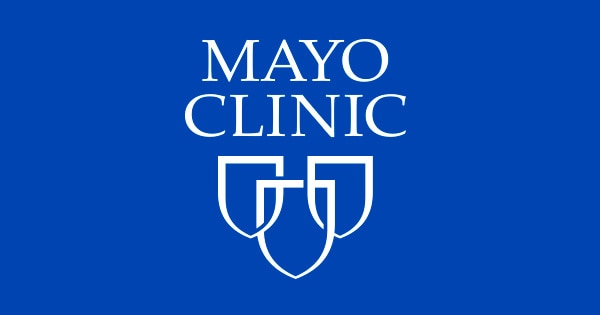
Klinefelter syndrome - Symptoms and causes
www.mayoclinic.org
"wrists are so small, just like a female."
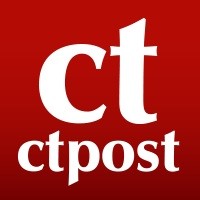
Symptoms may indicate genetic syndrome
[...] my shoulders are small, my chest has fatty tissue and looks like (I have) "man...www.ctpost.com
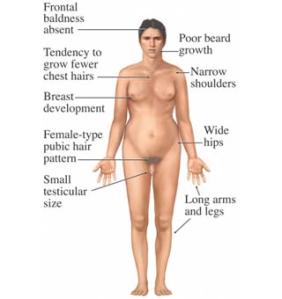
Yes I saw that diagram LAM, how frightening for a young boy going through all the problems a so called "normal" teenager goes through, and having these abnormalities developing at the same time, and not looking like anyone else! Not having anyone who understands and can empathize. Sounds a lot like hell to me! Not that any of this diminishes in any way what he has done. He was fully aware of what he was doing, and as an adult, should have sought on-going psychiatric help and medication.Below is a link to the Kleinfelter Syndrome which has a diagram of a male's body. It shows how the body features or shape resembles a female.
If a teenage boy was to have this syndrome I'm sure they would feel very awkward. Getting changed at school, and his younger brother probably taunted him too. My guess is BRE would have felt very awkward about his body image. Probably became extremely frustrated - hence the pent up anger.
As he grew older, he might have been reluctant to pursue girls, unless he found someone who was understanding, opting for a long-term relationship rather than something short-term.
If he does have KS, no wonder he's fairly quiet, probably didn't understand what was wrong, might have thought he was actually somewhat female. Possibly some sort of gender confusion?
If BRE did have KS could this explain the dressing up or are peoples thoughts still with it being a fettish?

Klinefelter Syndrome
What is Klinefelter Syndrome? Klinefelter Syndrome is a common genetic disorder, caused by chromosome aneuploidy, which solely affects males. Klinefelter’s is the product of chromosomes not …ucdreprosurvey.wordpress.com
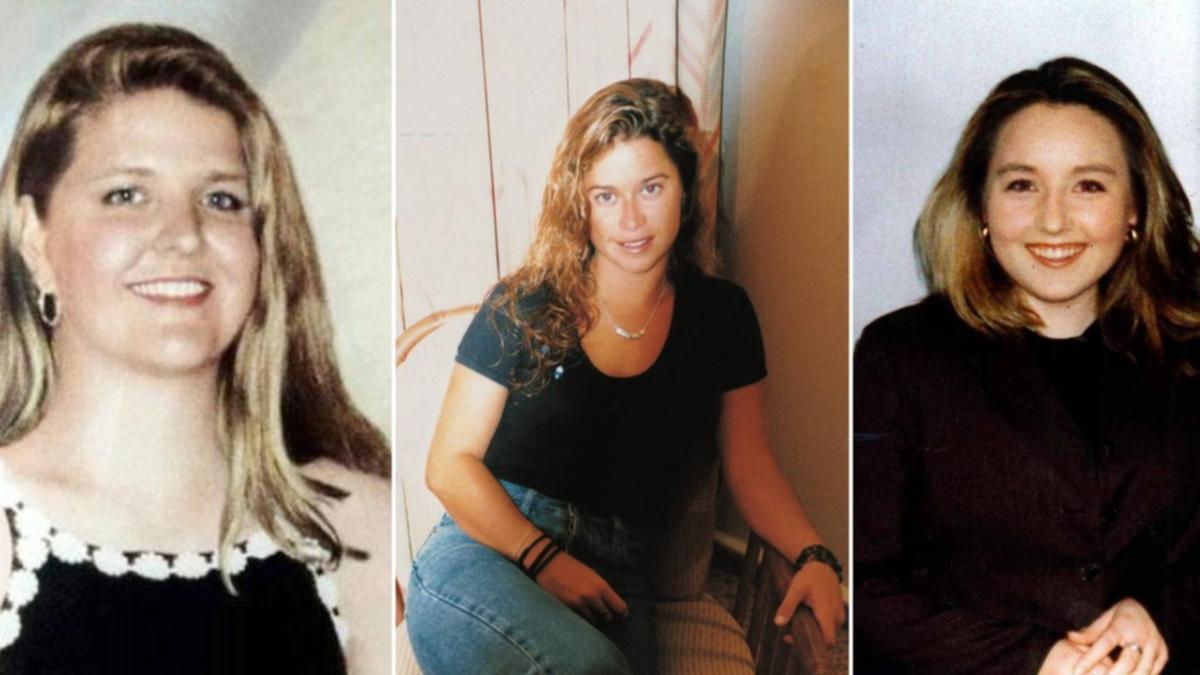
We never did get to find out if BRE ever went on the 13th June 2009 Central Crocs "Not Guilty Tour"?
From the flyer for the crawl!!???We never did get to find out if BRE ever went on the 13th June 2009 Central Crocs "Not Guilty Tour"?
Looks like it might not have been his cup of tea, because most of his favoured crimes were not on the "Conduct of Tour" list.
I'm not surprised that the prosecution did not try and produce any Crocs witnesses that might have been able to vouch for if BRE avoided this Swan Valley pub crawl.
Just noticed that the 619 page CSK trial verdict document has the Huntingdale victim's father code-named as 'EH'.So now it's been established that the Huntingdale victim that BRE pleaded guilty to had not one brother, but two brothers, that leaves the possibility that the verdict document's BRE Admissions about the 2 non-BRE DNA tests/results on 2 & 13 Dec, 2016, were actually for both of the Huntingdale victims brothers, and that the 2 Dec one not the Huntingdale victim. And that none of them were for the Huntingdale victim's father. Either way, it's just interesting in how they assign acronyms to witnesses in cases like this.

When he was young there was no internet available for him to search.Would be very interesting to see what little BRE searched on his little computer when he was so young and no doubt angry, with all that teasing going on?
Oh so what was he obsessed with, homework assignments?When he was young there was no internet available for him to search.
In Year 9, Edwards' family bought a computer that he quickly became attached to, the obsession lasting long into his adult life."BBM
Oh so what was he obsessed with, homework assignments?
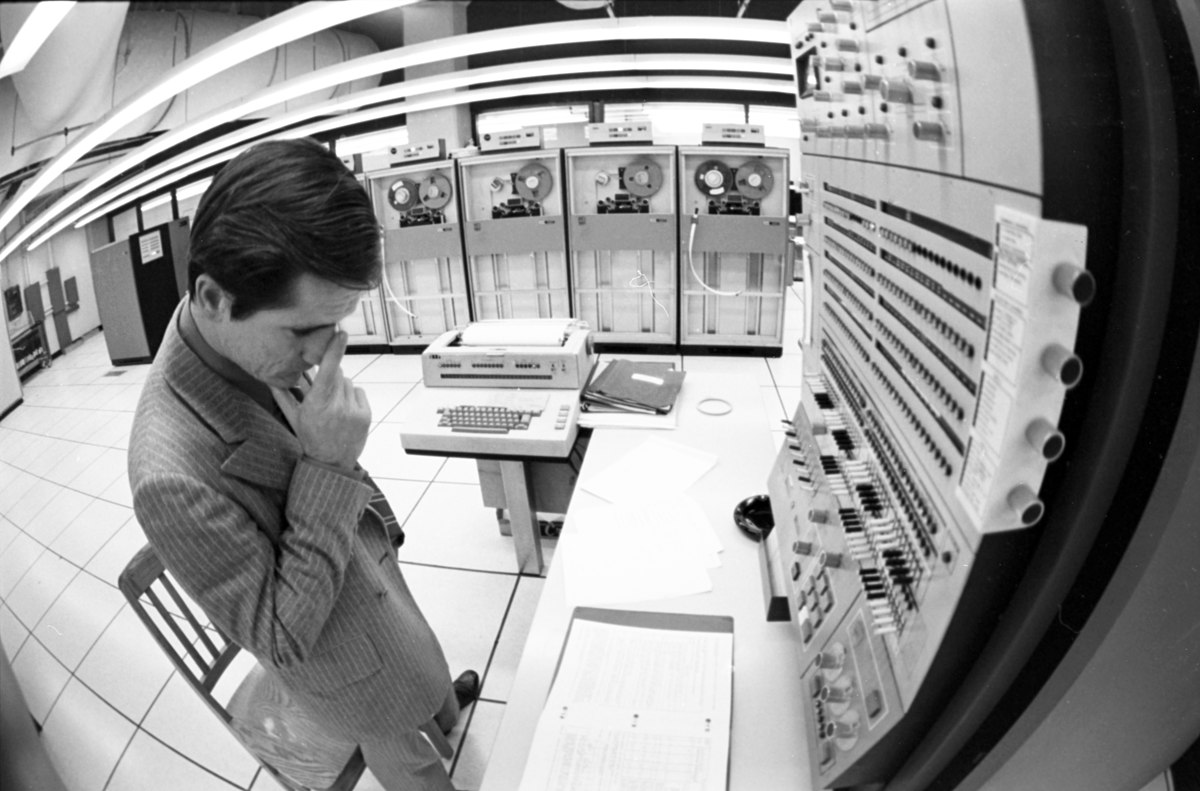
 en.wikipedia.org
en.wikipedia.org
Commodore 64 users can also use it as a telephone dialer'In year 9 BRE would have been about 14 and it would have been around 1983.
In 1983 there's a good chance his computer was a Commodore 64 an Atari 400, an Apple II or IBM PC XT
BRE would have very likely played single player games and maybe learnt how the operating systems on these computers worked.

History of personal computers - Wikipedia
en.wikipedia.org
For example
'Different Types of Applications You Can Use on the Commodore 64Here are 9 Cool Things You Can Do With a Commodore 64! | Retrogeekery
It’s probably hard to imagine your life without some sort of computer, whether it be a desktop, laptop, or even a tablet. That’s today though.…retrogeekery.com
The Commodore 64 can accommodate all kinds of applications – from basic letter writing to complex engineering applications. Some of the types of applications that can be used on a Commodore 64 are:
'Commodore 64 users can also use it as a telephone dialer'
- Everyday applications
- Business and financial applications
- Technical and scientific applications
- Mathematical and statistical applications
- Educational applications
- Hobby applications
- Game applications
- Other miscellaneous applications'

In 1983 there's a good chance his computer was a Commodore 64 an Atari 400, an Apple II or IBM PC XT
Can't remember that BFew can barely remember what day it is. Lucky we have you as Keeper of the Knowledge!In this CSK trial part 2 post here you quoted from The Weekend Australian newspaper
'He told detectives about the family getting an Atari gaming system, and while Edwards was in Year 9 at Gosnells Senior High School the family purchased a Commodore 64'

From memory about 1986, I remember seeing a personal computer at someone's house. I couldn't understand what they'd bought it for, or what they intended doing with it. Just thought it was a really strange thing to spend money on. At first, PCs were so slow.In year 9 BRE would have been about 14 and it would have been around 1983.
In 1983 there's a good chance his computer was a Commodore 64 an Atari 400, an Apple II or IBM PC XT
BRE would have very likely played single player games and maybe learnt how the operating systems on these computers worked.

History of personal computers - Wikipedia
en.wikipedia.org
For example
'Different Types of Applications You Can Use on the Commodore 64Here are 9 Cool Things You Can Do With a Commodore 64! | Retrogeekery
It’s probably hard to imagine your life without some sort of computer, whether it be a desktop, laptop, or even a tablet. That’s today though.…retrogeekery.com
The Commodore 64 can accommodate all kinds of applications – from basic letter writing to complex engineering applications. Some of the types of applications that can be used on a Commodore 64 are:
'Commodore 64 users can also use it as a telephone dialer'
- Everyday applications
- Business and financial applications
- Technical and scientific applications
- Mathematical and statistical applications
- Educational applications
- Hobby applications
- Game applications
- Other miscellaneous applications'
Umm the internet on an international scale launched in 1983 but started being built in the 60s. It was original used by education facilities, telcos, scientists and scholars.When he was young there was no internet available for him to search.
Umm the internet on an international scale launched in 1983 but started being built in the 60s. It was original used by education facilities, telcos, scientists and scholars.
The WWW (which exists on the internet- careful not to confuse the two) came about in 1990. Commercial use was well under the way by the mid 1990s. The first dial up modem came into being in the 60s. The Commodore 1650 Modem came out in 1982.
Seen as BREs father was in the Postmaster General’s Department/telecom it is quite possible he had access to the internet before the WWW came about. Back in those days there was very little in the way of a graphical user interface (Windows 95 and Macs were the first) and much was done using the text based DOS system instead.

 theconversation.com
theconversation.com
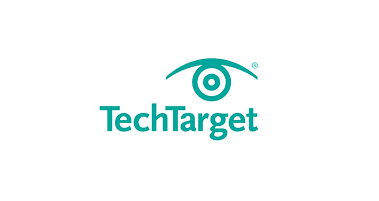
No probably just pinching pr0n books from somewhere, and a vivid imagination? Maybe spying on mother in shower, or neighbours?Telstra was 'officially' a laggard when it came to the internet and Australia.
Good luck finding much about any Telstra Research Lab research and the internet in the early to mid 80's. There might be something there in one of my links below if you look hard enough.
I still very much doubt that BRE somehow managed to connect to the internet around 1983-1985, when he was 14-16yo and was accessing violent/sadistic text based material that way, from having broken into a university system or building using a Commodore 64 and a modem.
'When Australia joined the global internet on June 23, 1989 – via a connection made by the University of Melbourne – it was mostly used by computer scientists.'
30 years since Australia first connected to the internet, we've come a long way
In just three decades we've gone from a very limited internet connection in Australia to now sharing our lives online.theconversation.com
'By the time Australia first connected, the internet had been developing for 20 years. The very first network had been turned on in the United States in 1969.
Australia too had networks during the 1980s, but distance and a lack of interest from commercial providers meant these were isolated from the rest of the world.'
'At first, email and internet news groups (discussion forums) were the main traffic, but the connection also gave access to information sharing services such as Archie (an old example here) and WAIS, which were mostly used to share software.'
http://www.rogerclarke.com/II/OzIHist.html_(remove the underscore to get to this link)
'Origins and Nature of the Internet in Australia
....almost all Australian computer scientists in universities and CAEs (and some employed in industry) had ftp and email from the late 1970s, non-CS 'early adopter' Australian researchers had to wait until 1990.' (CS=Computer Science).
'In the early 1980s, a permanent Australian email connection to the U.S. ARPAnet was established. This involved various contributions by (now Prof.) Bob Kummerfeld and (Sir) Piers Lauders at the University of Sydney, and Prof. Peter Poole and Robert Elz at the University of Melbourne. In the mid-1980s, Geoff Huston at ANU contributed an email gateway from the ACSnet mail delivery system into the DEC VAX/VMS systems that had come to dominate University computer installations.'
'There were a number of attempts to set up a broader university network through the second half of the 1980s. In March 1986, soon after the domain-name system was deployed, IANA delegated the .au ccTLD to Robert Elz, at Melbourne University.'
'Until the early 1990s, the Acceptable Use Policy (AUP), which defined what traffic could be transmitted on the Internet's U.S. backbone, precluded general use of the Internet by the public, or for commercial purposes. AARNet applied similar policies to those in the U.S.A., stating that "Use of AARNet for commercial purposes, and use of AARNet for purposes unrelated to the broad areas of relevance to the academic and research community is not considered acceptable use of AARNet services" (AVCC 1993a). The Australian segment of the Internet accordingly operated as a restricted-access service for universities and the CSIRO. It was to be some years before users outside those communities could officially gain access, and before people did so in large numbers.'
'Some limited commercial IAP services were available even before AARNet was established. Western Australia's DIALix claims to have been offering services commercially in Perth as early as 1989. DIALix's connection to the net only became a full IP connection around 1992, but its Principals claim to have made Internet email and Usenet access commercially available by means of periodic STD calls (at 9600 bps), and its customers included some remote from Perth who themselves used dial-up STD connections to Perth. I am assured by Ian Peter, Pegasus Networks' foundation CEO, that it offered public dialup access to the Internet in Australia, commencing in June 1989 with local access, and moving to nationwide access from 14 September 1989. It operated initially from Byron Bay, and later from Brisbane. It used UUCP and TCP/IP connections to exchange mail and newsgroups with the Internet, initially via direct dialup to USA, and later via ACSNet.'
'The First Half of the 1990s - Maturation ....
Driven by the combination of supply and demand, both for communications and increasingly for content, the Internet quickly became attractive to people outside the research and teaching arena. Sinclair (1999b) quoted Geoff Huston as saying that commercial researchers were the first outside the academic community to cotton on to the possibilities of the Internet, and that librarians were the first non-scientists. "The Bureau of Meteorology, BHP research labs, Telstra Research labs were very early adopters". Sinclair also quoted Robert Elz as saying that "there were always social applications on the Internet - in the early '90s, [Roy and HG's] radio call of the Melbourne Cup was 'broadcast' and, very early on, there were text descriptions of Test cricket matches in Australia".'
'By late 1994, use by the non-AARNet user base had increased to about 20% of total traffic. An alternative business model was necessary. In July 1995, AVCC transferred its commercial customers, associated assets, and the management of interstate and international links to Telstra. Telstra thereby acquired the whole of the infrastructure that at that stage constituted 'the Internet in Australia', spawning what was subsequently to become Telstra BigPond.'
(AVCC = Australian Vice-Chancellors' Committee)
'By the late eighties, almost twenty years after the establishment of ARPANET in the US, there were a number of different networks accessed by the university sector around Australia'
'Unlike in the US, however, there was no push from government to develop a national computer network or to ensure that Australia kept pace with the technological developments taking place in the networking field in the rest of the world.'
'By 1976, CSIRONET had connected more than 50 computers with more than 250 terminals around Australia. Like ARPANET, the CSIRO network was mainly focussed on servicing the needs of the CSIRO and those scientists at universities working with it on research projects'
There's a huge amount of articles, videos and scanned documents at this site.Telstra Research Laboratories - History
History of the Telstra Research Laboratories, providing biographies of past directors and a listing of notable achievementswww.coxhill.com
https://en.wikipedia.org/wiki/Archie_(search_engine) (not developed until 1990)

What is WAIS (Wide Area Information Servers)? - Definition from WhatIs.com
WAIS (Wide Area Information Servers) is an Internet system in which specialized subject databases are created at multiple server locations, kept track of by a directory of servers at one location, and made accessible for searching by users with WAIS client programs.whatis.techtarget.com
Not to forget that BRE's 1st wife's account of BRE's love affair with a computer was not until later in their doomed relationship, in late 1994, when he claimedly bought a computer for their Huntingdale home, implying that he did not have a computer in this 5-6 year relationship before then, or if he did, kept it hidden from his 1st wife.No probably just pinching pr0n books from somewhere, and a vivid imagination? Maybe spying on mother in shower, or neighbours?
Telstra was 'officially' a laggard when it came to the internet and Australia.
Good luck finding much about any Telstra Research Lab research and the internet in the early to mid 80's. There might be something there in one of my links below if you look hard enough.
I still very much doubt that BRE somehow managed to connect to the internet around 1983-1985, when he was 14-16yo and was accessing violent/sadistic text based material that way, from having broken into a university system or building using a Commodore 64 and a modem.
'When Australia joined the global internet on June 23, 1989 – via a connection made by the University of Melbourne – it was mostly used by computer scientists.'
30 years since Australia first connected to the internet, we've come a long way
In just three decades we've gone from a very limited internet connection in Australia to now sharing our lives online.theconversation.com
'By the time Australia first connected, the internet had been developing for 20 years. The very first network had been turned on in the United States in 1969.
Australia too had networks during the 1980s, but distance and a lack of interest from commercial providers meant these were isolated from the rest of the world.'
'At first, email and internet news groups (discussion forums) were the main traffic, but the connection also gave access to information sharing services such as Archie (an old example here) and WAIS, which were mostly used to share software.'
http://www.rogerclarke.com/II/OzIHist.html_(remove the underscore to get to this link)
'Origins and Nature of the Internet in Australia
....almost all Australian computer scientists in universities and CAEs (and some employed in industry) had ftp and email from the late 1970s, non-CS 'early adopter' Australian researchers had to wait until 1990.' (CS=Computer Science).
'In the early 1980s, a permanent Australian email connection to the U.S. ARPAnet was established. This involved various contributions by (now Prof.) Bob Kummerfeld and (Sir) Piers Lauders at the University of Sydney, and Prof. Peter Poole and Robert Elz at the University of Melbourne. In the mid-1980s, Geoff Huston at ANU contributed an email gateway from the ACSnet mail delivery system into the DEC VAX/VMS systems that had come to dominate University computer installations.'
'There were a number of attempts to set up a broader university network through the second half of the 1980s. In March 1986, soon after the domain-name system was deployed, IANA delegated the .au ccTLD to Robert Elz, at Melbourne University.'
'Until the early 1990s, the Acceptable Use Policy (AUP), which defined what traffic could be transmitted on the Internet's U.S. backbone, precluded general use of the Internet by the public, or for commercial purposes. AARNet applied similar policies to those in the U.S.A., stating that "Use of AARNet for commercial purposes, and use of AARNet for purposes unrelated to the broad areas of relevance to the academic and research community is not considered acceptable use of AARNet services" (AVCC 1993a). The Australian segment of the Internet accordingly operated as a restricted-access service for universities and the CSIRO. It was to be some years before users outside those communities could officially gain access, and before people did so in large numbers.'
'Some limited commercial IAP services were available even before AARNet was established. Western Australia's DIALix claims to have been offering services commercially in Perth as early as 1989. DIALix's connection to the net only became a full IP connection around 1992, but its Principals claim to have made Internet email and Usenet access commercially available by means of periodic STD calls (at 9600 bps), and its customers included some remote from Perth who themselves used dial-up STD connections to Perth. I am assured by Ian Peter, Pegasus Networks' foundation CEO, that it offered public dialup access to the Internet in Australia, commencing in June 1989 with local access, and moving to nationwide access from 14 September 1989. It operated initially from Byron Bay, and later from Brisbane. It used UUCP and TCP/IP connections to exchange mail and newsgroups with the Internet, initially via direct dialup to USA, and later via ACSNet.'
'The First Half of the 1990s - Maturation ....
Driven by the combination of supply and demand, both for communications and increasingly for content, the Internet quickly became attractive to people outside the research and teaching arena. Sinclair (1999b) quoted Geoff Huston as saying that commercial researchers were the first outside the academic community to cotton on to the possibilities of the Internet, and that librarians were the first non-scientists. "The Bureau of Meteorology, BHP research labs, Telstra Research labs were very early adopters". Sinclair also quoted Robert Elz as saying that "there were always social applications on the Internet - in the early '90s, [Roy and HG's] radio call of the Melbourne Cup was 'broadcast' and, very early on, there were text descriptions of Test cricket matches in Australia".'
'By late 1994, use by the non-AARNet user base had increased to about 20% of total traffic. An alternative business model was necessary. In July 1995, AVCC transferred its commercial customers, associated assets, and the management of interstate and international links to Telstra. Telstra thereby acquired the whole of the infrastructure that at that stage constituted 'the Internet in Australia', spawning what was subsequently to become Telstra BigPond.'
(AVCC = Australian Vice-Chancellors' Committee)
'By the late eighties, almost twenty years after the establishment of ARPANET in the US, there were a number of different networks accessed by the university sector around Australia'
'Unlike in the US, however, there was no push from government to develop a national computer network or to ensure that Australia kept pace with the technological developments taking place in the networking field in the rest of the world.'
'By 1976, CSIRONET had connected more than 50 computers with more than 250 terminals around Australia. Like ARPANET, the CSIRO network was mainly focussed on servicing the needs of the CSIRO and those scientists at universities working with it on research projects'
There's a huge amount of articles, videos and scanned documents at this site.Telstra Research Laboratories - History
History of the Telstra Research Laboratories, providing biographies of past directors and a listing of notable achievementswww.coxhill.com
https://en.wikipedia.org/wiki/Archie_(search_engine) (not developed until 1990)

What is WAIS (Wide Area Information Servers)? - Definition from WhatIs.com
WAIS (Wide Area Information Servers) is an Internet system in which specialized subject databases are created at multiple server locations, kept track of by a directory of servers at one location, and made accessible for searching by users with WAIS client programs.whatis.techtarget.com
Huh?? You lost me at the word Origins in the first line Bonza! Clever post, very informative for those that understand "Martian"!From your post
Origins and Nature of the Internet in Australia
....almost all Australian computer scientists in universities and CAEs (and some employed in industry) had ftp and email from the late 1970s, non-CS 'early adopter' Australian researchers had to wait until 1990.' (CS=Computer Science).
Both FTP clients and servers (FTP = File Transfer Protocol) and email clients and servers (SMTP = Simple Mail Transfer Protocol) run over the internet just like the WWW (HTTP - Hypertext Transfer Protocol), they are just different protocols. GUIs (graphical user interfaces) just brought all the protocols together in one suite and gave it icons/pictures amd made point and click with a mouse so it was user friendly and you didn't have to know DOS to use them.
More here from http://www.rogerclarke.com/II/OzI04.html
Computer science specialisations and then departments appeared in Australian universities during the 1970s. About the mid-1970s, during the ARPANET's early years, a few Australian researchers made spasmodic connections to it via the international dial-up service offered by the then Overseas Telecommunications Commission (OTC).
He would not have downloaded stuff (regardless of what it might have been) like you do today or back in the mid 90s even but he was most definitely learning how the use and what the capabilities of a computer were. Apart from that another DOS based protocol - BBS (Bulletin Board System) around in the 70s covered everything you can think of, GUIs just made them visible with point and click.

Ok... Simply put,from the 70s onwards those who had it supplied through work or could afford it themselves could access the internet in the old school way call DOS - Disk Operating System (Disk as in floppy disk because hard drives didn't exist). It is an Operating system just like windows is an operating system (OS). Because it was text based and not GUI based it was tiny in size and coud run from a floppy disk. Everything you wanted your computer to do you had tell it to do it (type commands). Nowadays with GUIs you just click on something.Huh?? You lost me at the word Origins in the first line Bonza! Clever post, very informative for those that understand "Martian"!
Thanks so much Bonza for going to that trouble, makes sense now.Ok... Simply put,from the 70s onwards those who had it supplied through work or could afford it themselves could access the internet in the old school way call DOS - Disk Operating System (Disk as in floppy disk because hard drives didn't exist). It is an Operating system just like windows is an operating system (OS). Because it was text based and not GUI based it was tiny in size and coud run from a floppy disk. Everything you wanted your computer to do you had tell it to do it (type commands). Nowadays with GUIs you just click on something.
Everything that you could get on the internet when it became commercialized already existed in DOS world. GUIs made it into pictures and hyperlinks etc so anyone could use and get it.
